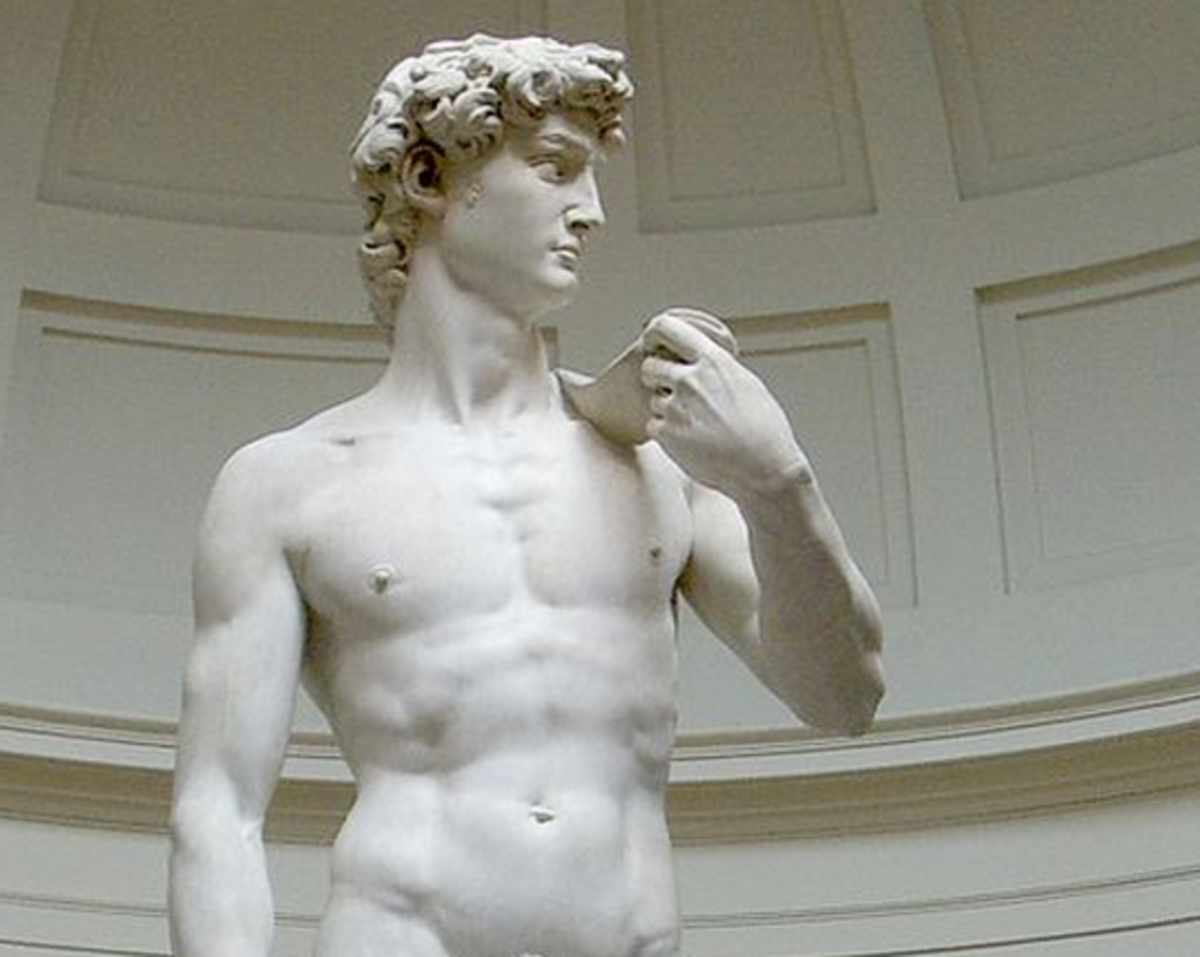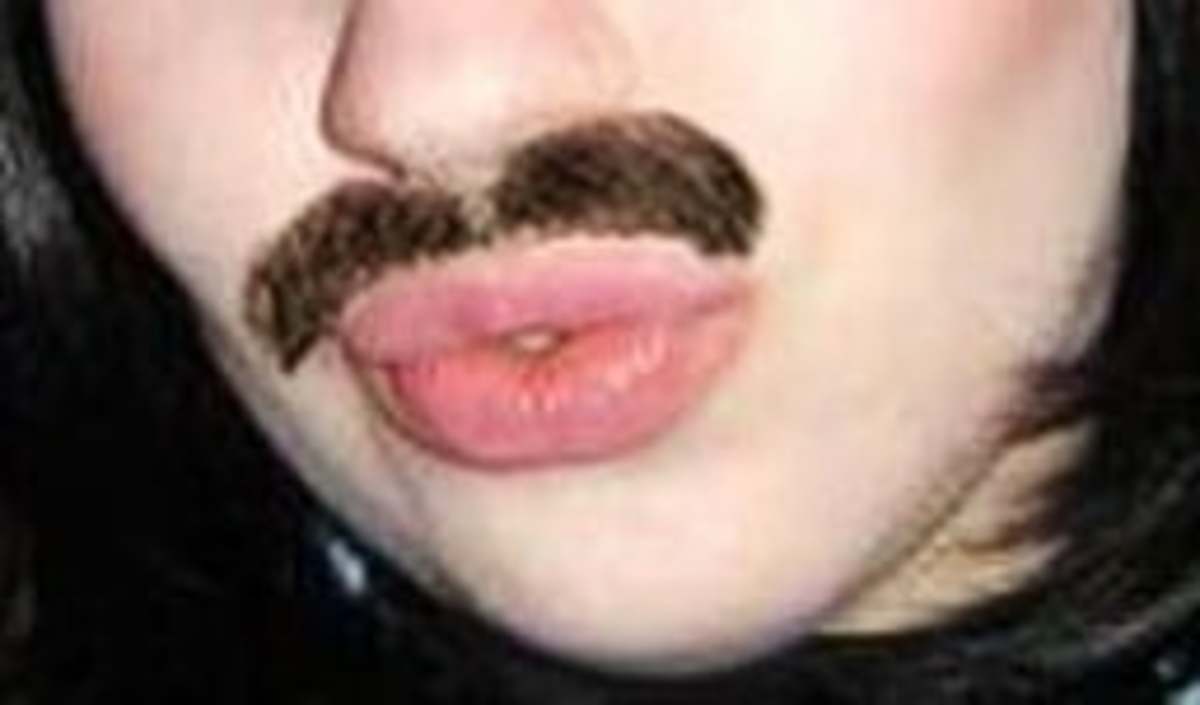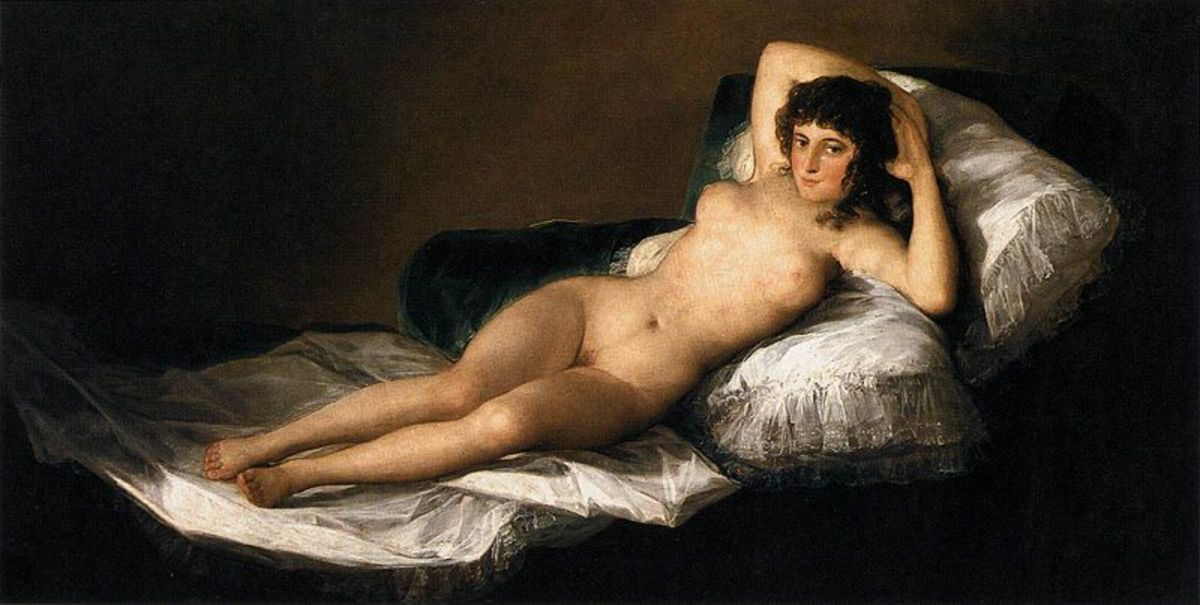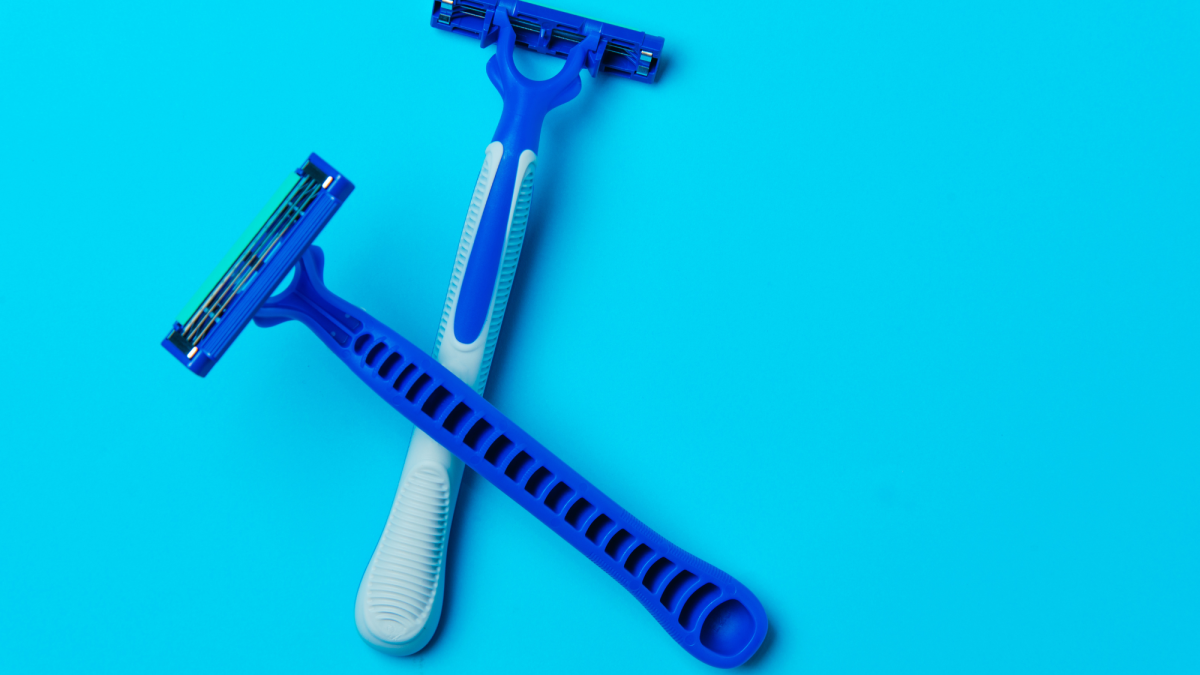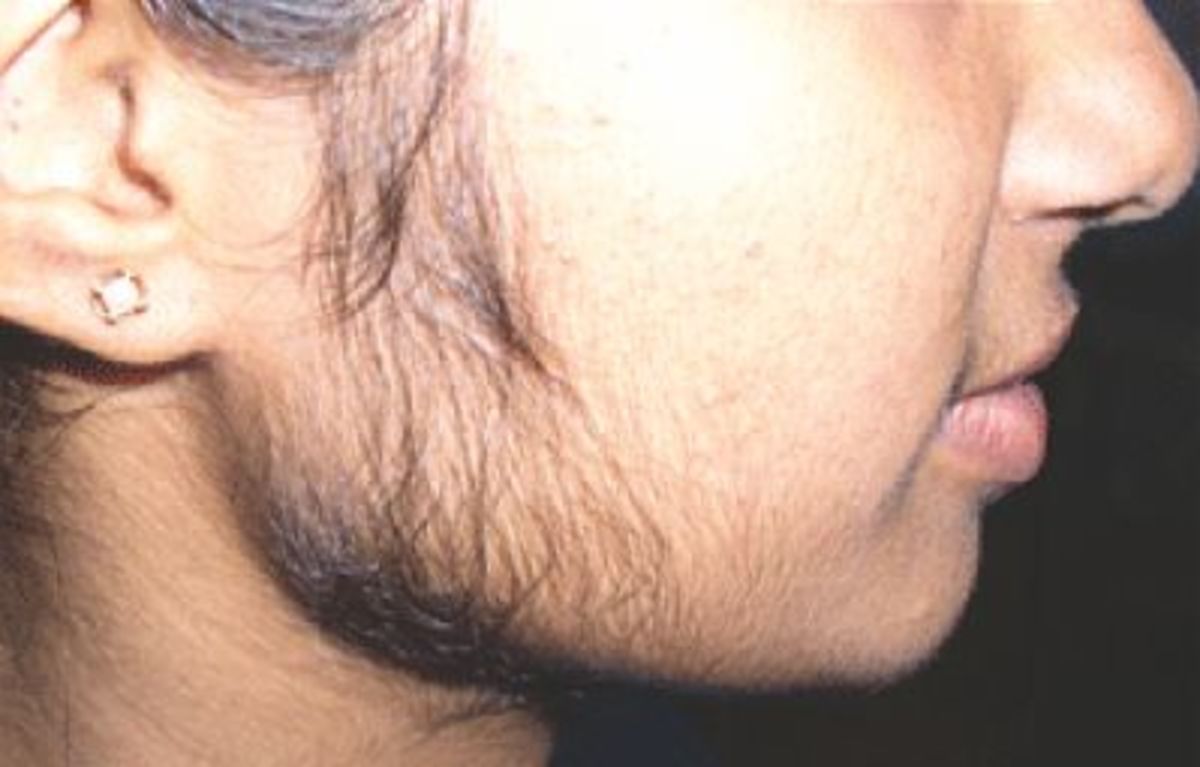Men's Shaving Choices - Straight Razor, Safety Razor or Electric Razor
Men's Facial Hair Styles Change Just as Women's Hair Styles
Throughout the ages men have had the choice of cultivating or removing facial hair. Like women's hair styles, the wearing of beards, moustaches and sideburns varies from age to age with some periods in which clean shaven with no facial hair being the norm to others in which facial hair is the norm.
In pre-historic times before humans learned how to forge metal and produce blades for cutting and scraping hair on a man's head and face just grew unchecked. This style of full, untrimmed beards has persisted throughout the ages for a few, especially during periods when men are away from civilization and lack both the incentive and often the means for shaving.
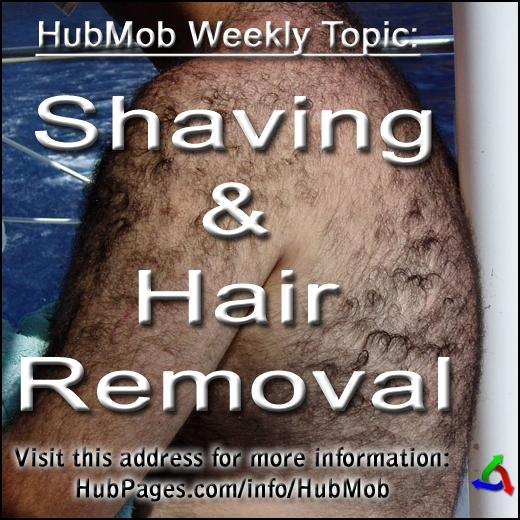
Beards Seem to Be in Style When a Queen Reigns in Britain
While some men in the Stone Age era may have felt a need to remove or trim facial hair and figured out ways to accomplish this with things like sharpened shells, flints or other items could be sharpened, it probably wasn't until after the discovery of how to forge metal and make blades that shaving began to take hold.
Facial hair, or lack of it, on men has as much to do with culture as with the ease or difficulty with which it can be removed. America's Founding Fathers and their counterparts in England are almost always pictured as being clean shaven while from mid-nineteenth century to early twentieth century beards, sideburns and moustaches were common.
When I was growing up my Father always used to say that beards and other facial hair style on men were always popular during times when the British monarch was a woman. He never explained where he got the theory or why this was but seemed to be on the mark because since the late 1960s, less than two decades after Queen Elizabeth II assumed the throne beards and moustaches have become common. Look at the pictures at the end of this Hub of the British monarchs from the clean shaven King William IV who reigned from 1830 to 1837 and was the uncle of Queen Victoria to the clean shaven King George VI who reined from 1936 to 1952 and was the father of the present Queen.
During the long reign of Queen Victoria, from 1837 to 1901, beards, sideburns and moustaches were the norm on men in the English speaking world. Victoria's son, Edward VI whose reign lasted from 1901 to 1910, and grandson, George V whose reign lasted from 1910 to 1936, both sported beards but both of George's sons, Edward VIII (whose ascended the throne in January 1936 but abdicated in December of that year to marry American divorceeWallis Warfield Simpson) and George VI were clean shaven.
It appears to have taken a mere three decades for male facial hair to go out of style following the death of Queen Victoria and less than two decades for that style to return following Queen Elizabeth's coming to the throne.
How to Shave With a Straight Razor
A Shave by a Barber
Shaving With a Straight Razor
Once humans learned how to forge metal shaving became easier. Until the mid-eighteenth century razors were much like a knife blade. However, beginning in the mid-eighteenth century, what we now know as a straight razor began to appear. A straight razor is a sharp knife-like blade with a handle into which the blade folds when not in use.
While a straight razor gives a nice close shave, it has some drawbacks, the first being that it is easy to cut oneself with this razor especially in the case of those who lack experience shaving themselves with this type of razor. Secondly, because it is somewhat difficult to manipulate as well as easy for the shaver to cut himself if he is not careful, shaving with a straight razor tends to be slow.
In addition to taking longer to shave, it also takes longer to prepare to shave as the blade has to be sharpened before each shave by rubbing it along a special leather strap - a process called stropping. Maintaining its razor sharp edge requires frequent additional sharpening using a whetstone. Stainless steel blades don't require much time to clean them after each shave but stainless steel also does not have as sharp an edge as a high-carbon steel blade. However, high-carbon steel blades are prone to rust so time and care must be taken to clean and oil the blade after each use and then to remove the excess oil at the start of the next shaving session.
Finally, men who are willing to invest this much time and effort into shaving each morning, generally invest additional time in mixing and applying a lather using a shaving mug, shaving soap and a shaving brush rather than simply dispensing some shaving cream from a can.
One only has to view the two videos at the right to get an idea of the time and effort involved in shaving with a straight razor. While some men in the past as well as some in the present shave themselves with a straight razor, in times past men of wealth usually had a servant to shave them while those who could not afford a servant visited the local barber shop every week or so for a shave.
The Safety Razor
The advent of the safety razor provided an easy and relatively inexpensive way for men to shave.
A version of the safety razor was first invented by a Frenchman named Jean-Jacques Perret in the early 1800s. Perret's razor consisted of a single edge, removable blade mounted on a handle much like the blade and handle of a gardening hoe. Originally available in France and Germany it was soon copied by the British in the mid-1800s and Americans toward the end of the nineteenth century. Like today's safety razors, the blades on these early versions of the safety razor were removable but not disposable. Instead, users had to periodically remove the blade, re-sharpen it like a straight razor and then remount it in the razor.
However, the real technological advance in safety razors was brought about by an American named King Camp Gillette in 1901. Gillette's idea was to make a disposable, double edged blade which could be used for a while and then discarded and replaced with a fresh blade. The blades were originally made of high-carbon steel which usually began to rust and be discarded before the blade dulled. This was due to the technology at the time, but it also fit in with Gillette's business plan which called for selling razors at near zero profit to encourage men to buy the razor and then the company made its profit selling the razor blades. Selling replacement blades generated a steady stream of profit for the Gillette Company for the next half century.
Safety razors are relatively inexpensive, easy to use and, while nicks were generally common, major cuts were generally not a risk like they were with the straight razors. Gillette's invention made shaving quick and easy and that, as much as the change in the British monarchs from Queens to Kings, probably led to the early twentieth century clean shaven look for men.
World War I provided a great marketing opportunity for Gillette as the company had an arrangement with the War Department to provide every officer and enlisted man going overseas with a safety razor and blades. By the time the war ended almost an entire generation of young men had been introduced to daily shaving with a safety razor.
In recent years there have been many advances in safety razor technology. Today, the blades last longer, shave closer, rarely nick or cut the skin and the razors themselves follow the contours of the face much better.
The Electric Razor
While the safety razor was a great advance in terms of ease of use and safety, it still had its drawbacks. Men still had to lather up in order to shave and there were still the small, but irritating, cut that resulted periodically.
The early Twentieth Century was in many ways the age of the electric motor as electric motors were being attached to all kinds of products in an effort to reduce work. Given this, it was only logical that someone would attach an electric motor to a razor to automate shaving.
Actually, while the electric motor made electric shavers possible, the motivation behind the electric shaver was due to one man's discomfort while shaving in the cold of Alaska.
Colonel Jacob Schick is credited with inventing the electric razor. Schick, a reserve Army Officer and entrepreneur, spent some time beginning in 1910 to make some trips to Alaska and northern British Columbia to look for gold. On one of these trips he hurt his ankle and was forced to camp in the wilderness while it healed. He had food and a crude shelter but found shaving in the forty below winter weather to be uncomfortable. Having nothing better to do he began trying to figure out how to solve his shaving problem by a shaver powered by an electric motor and did not require the use of water to shave.
Given that he was stuck in the Alaskan wilderness in 1910, I doubt that there was any electricity available for miles so even if he had had access to an electric shaver there wouldn't have been any electricity to power it - he should have just grown a beard and waited until he got back to civilization to shave. However, thinking about how to design and build an electric razor did give him something to do and kept his mind active so the effort was worth it in the end.
World War I interrupted Col. Schick's work on the electric razor as he returned to active duty for the War. At the end of the war he returned to his razor project and, to help generate capital for the project started a company that made safety razors. Using knowledge gained from working with machine guns during the war he came up with a cartridge system, similar to the injector razor that the Schick company came up with in the 1960s, in which a supply of blades came in a cartridge and could be inserted from the cartridge directly into the razor thereby removing the need to handle the blade and risk cutting one's fingers.
In 1929 Schick introduced his electric powered dry razor and his company began selling it. While slow to take off, electric razors over time have established themselves in the market. While they have not overtaken, let alone displaced, the safety razor they have a decent segment of the shaving market.
Like the safety razor, electric razors have been improving both in terms of quality of the shave and, with the introduction of rechargeable batteries, ease of use.
Beards Seem to Be in Style When a Queen Reigns in Britain
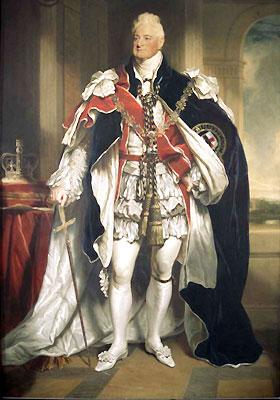
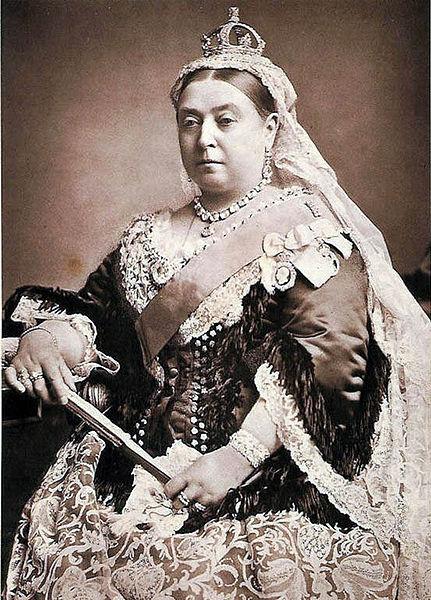
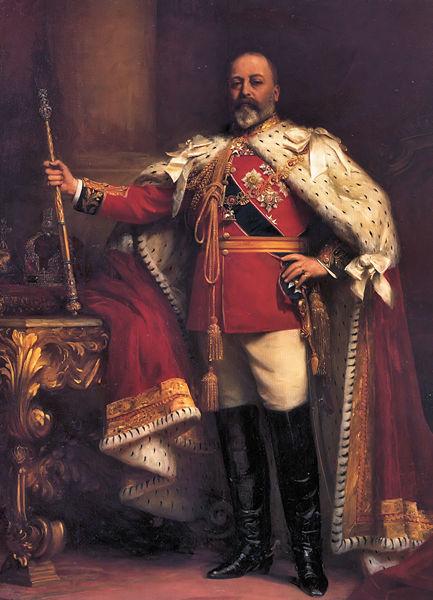
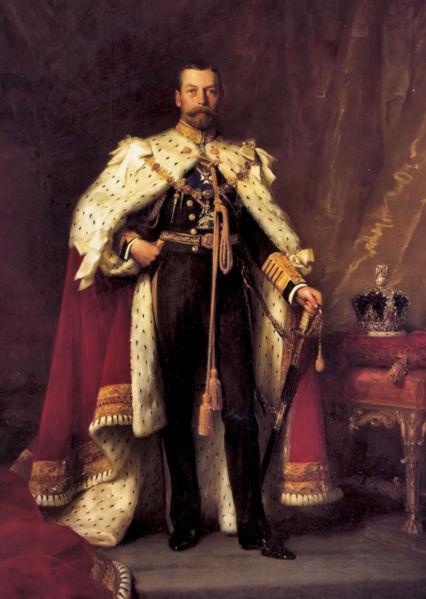
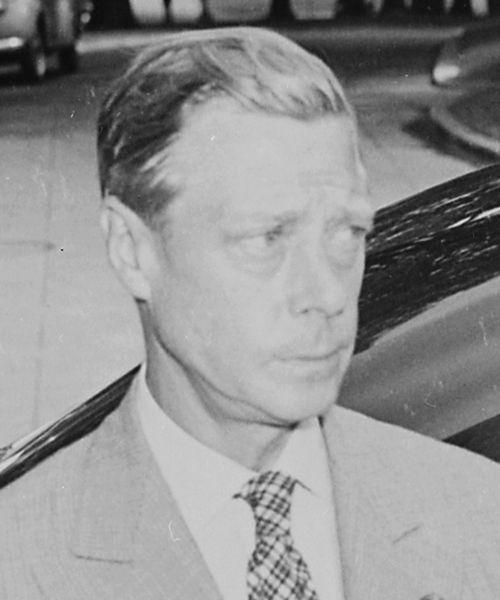
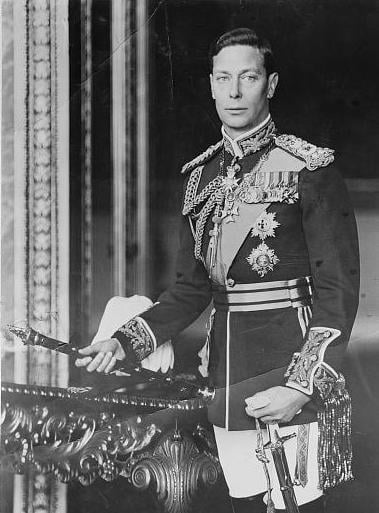
Which Razor to Choose
Except for those who decide not to shave at all and just let their beards grow wild with only an occasional trimming with scissors, men today have a choice of three broad categories of razors.
The first is the straight razor of which I have no experience with other than, as a teenager I remember the barbers using a straight razor to remove the hair from the back of the neck and around the ears. While they always did a good job and never cut me, just looking at the blade was enough for me to decide not to try one of those things myself on my face.
From what I have read, straight razors are supposed to give a very close shave and are thus liked by those who use them. I also have the impression that those who use a straight razor look upon shaving as ritual from which they draw pleasure. The sharpening, the cleaning, the preparation of the face, the slow and precise positioning and drawing of the blade over the face seems to provide such men with great satisfaction. For them shaving seems to have risen to the level of a hobby to be engaged in with great enthusiasm rather than an early morning chore. To those who like this, I say enjoy.
For myself I prefer the safety razor as, especially the recent models, the process of shaving with these is fairly quick and safe (no cuts or nicks) and the shave itself is clean and close. My Father used an electric razor most of his life and, when I first started shaving, I was given an electric which I used in high school. However, when I got to college some friends in the dorm encouraged me to try their safety razors and, finding that I liked it I switched and used a safety razor until about three years ago when my daughter brought me an electric razor, f like the one her boyfriend used, for Christmas.
The electric shaver, a rechargeable, triple head Phillips Norelco was easy to use and gave a nice sooth shave so I switched back to an electric but continued to use the safety razor periodically However, about a year ago, after my daughter convinced me that one could learn to put contacts into their eyes and remove them without pain or poking the eye out, I switched to contacts.
While my eyesight is not as good as it once was, except for reading books or computer screens or street signs from three blocks away, I can function very well without glasses and thus for the past decade or so have worn glasses only as needed. Of course contacts are an all day thing and, wearing them, I noticed that some things became sharper after switching to contacts. One fo these was my face in the mirror in the men's room at work. By mid-afternoon minor stubble is apparent when I shave with the electric razor while it does not show on days when I use the safety razor.
While the safety razor provides a nice close shave, the electric is quick and easy and takes about half the time to shave as does the safety razor. Being battery operated, the electric shaver is portable which makes it ideal for freshening up before landing on a ten hour flight to Russia or taking it to work and shaving before attending an evening function after work (it also came in handy one day when I overslept and ended up shaving while waiting for a red light).
So, for me, I find that both the safety razor and electric razor have their advantages and I have come to alternate between the two depending upon my needs at the moment.





